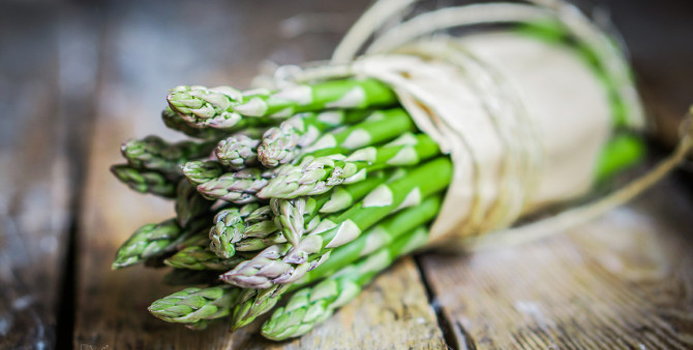Asparagus is a vegetable that is easy to overlook if you do not have experience buying and cooking it. However, it is rich in a long list of vitamins and nutrients. It contains nutritional properties that cleanse and heal.
Types of Asparagus
Asparagus is harvested in the spring. There are 20 different types of edible asparagus. The most common type is green asparagus. It grows in flatbeds and receives sunlight, giving it its green color.
Another type is white asparagus which is grown in soil and does not receive sunlight. You can usually find it canned. It tends to be more expensive than the green variety. White asparagus is milder in flavor than green asparagus and is often more tender.
A third type of asparagus is purple. It is only about 3 inches tall and has a fruity flavor. Sometimes it is more bitter than the white and green varieties.
Nutrition of Asparagus
There are 43 calories in 1 cup of boiled asparagus. It contains no cholesterol and is low in sodium. Asparagus is an excellent source of:
- Vitamin K
- Vitamin B folate
- Vitamin C
- Vitamin A
There are a series of B vitamins in asparagus in lesser amounts: B1, B2, B3 and B6. By eating asparagus, you will also receive the benefit of:
- Dietary fiber
- Copper
- Potassium
- Protein
- Manganese
- Phosphorus
Healing and Cleansing Properties of Asparagus
Asparagus has been known for many centuries for its medicinal properties. It is thought of as a food that heals and cleanses. In addition to its many nutrients, it acts as a diuretic. Its fiber works as a laxative. It protects small blood vessels. Green asparagus is a good source of vitamin C, which helps you to produce collagen. Maintaining enough collagen leads to younger looking skin.
Selecting and Storing Asparagus
Here are a few tips on how to select and store this nutritious vegetable:
- Select a bunch that has spears of the same or similar diameter so that they will all cook at the same pace.
- Choose spears that are smooth and firm, avoiding the wrinkled ones.
- Avoid buying spears that have a yellowish look or a sharp smell, as this indicates lack of freshness.
- Wrapping asparagus in a damp cloth will make it last longer in the refrigerator.
- Cook asparagus right away as it will take on a wooden texture after a couple of days.
Cooking Asparagus
You can boil asparagus in a pot in salted water. You can also roast it, grill it, steam or sauté it. It lends itself very well to various seasonings and sauces such as olive oil, sea salt, garlic, turmeric, butter and lemon.
As with cooking all vegetables, be sure to practice methods that preserve their nutrition. Steaming asparagus is a good way to achieve optimal nutrition. You will find steamers designed especially for asparagus that allow the spears to stand up. This lets the harder parts at the base of the vegetable receive more heat while the more tender part of the vegetable does not overcook.
If using a microwave, consider limiting the cooking time to as little as possible. You do not want to overcook asparagus.



